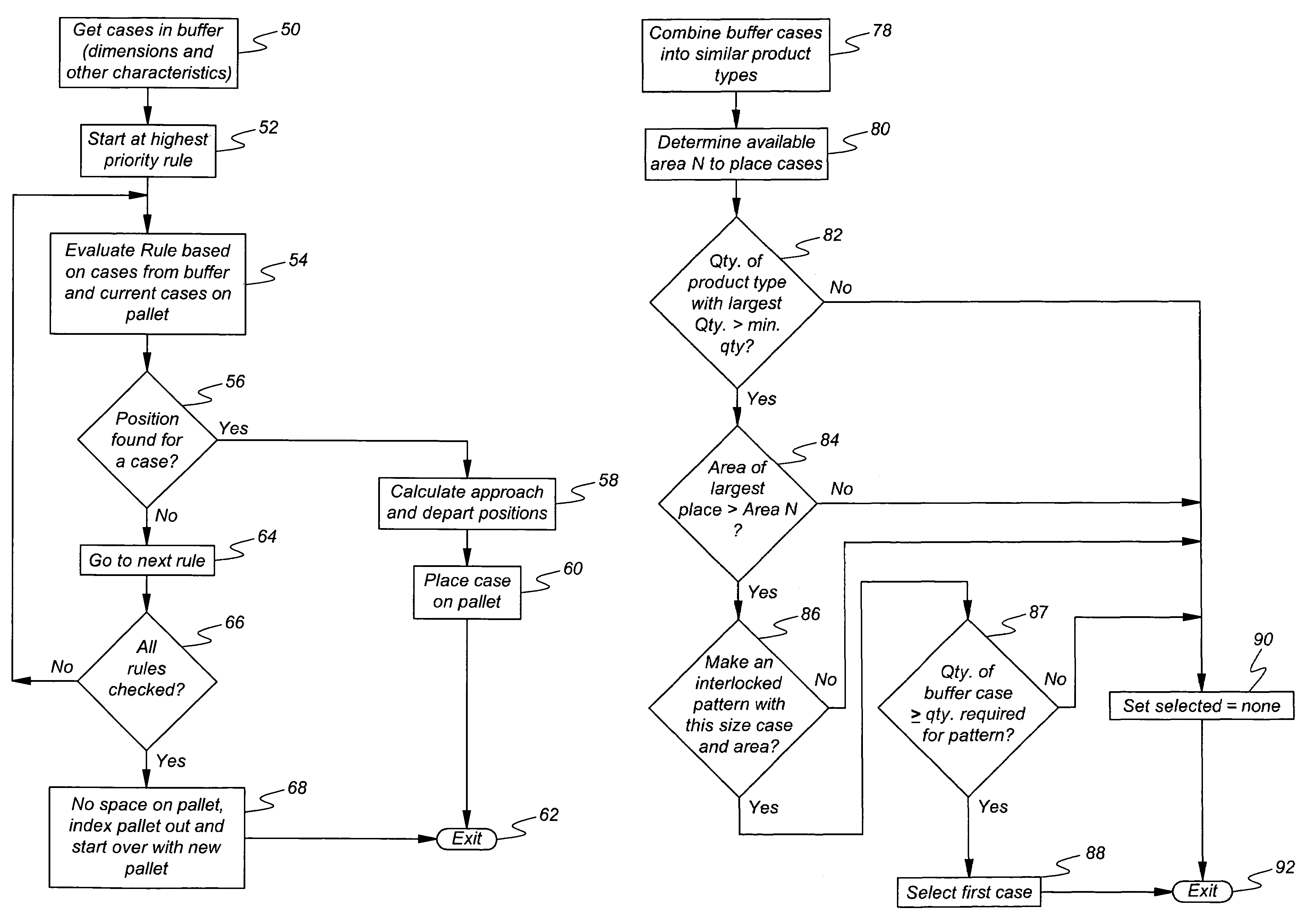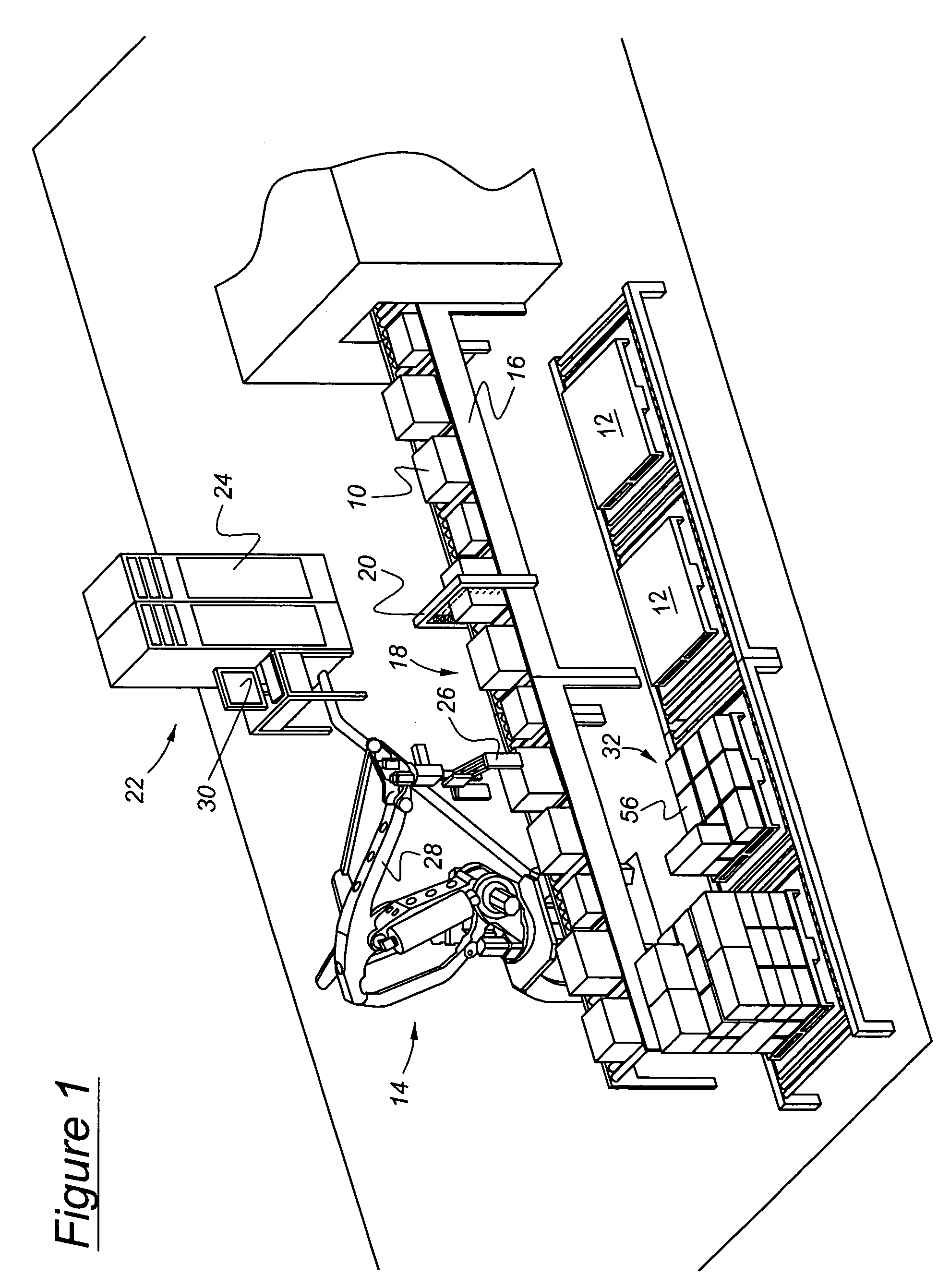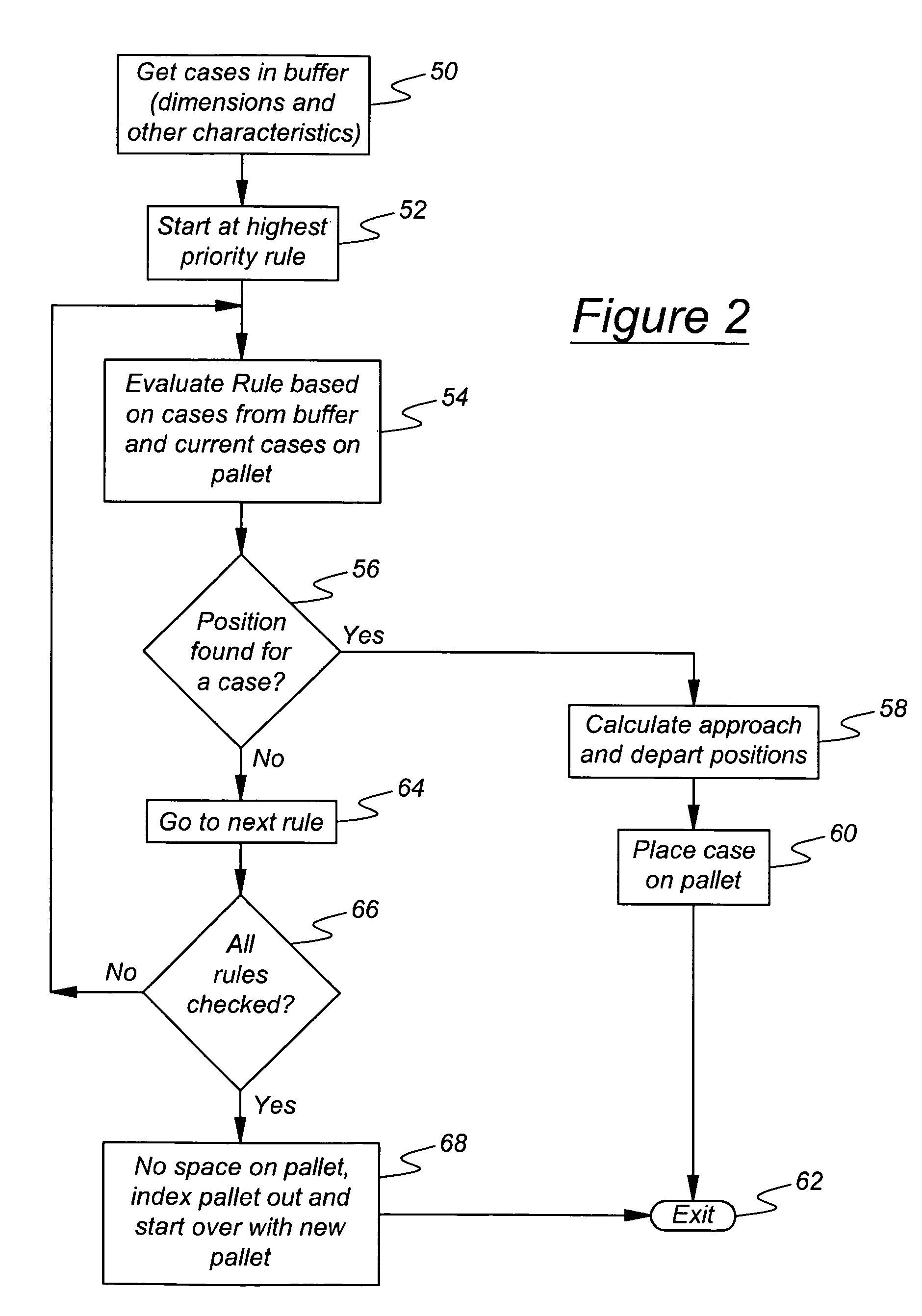Automated palletizing cases having mixed sizes and shapes
a palletizing case and automatic technology, applied in the field of palletizing cases of various sizes, can solve the problems of shortening computer execution time and requiring a large number of decisions, and achieve the effects of ensuring the stability of stacked cases, minimizing processing time, and optimizing the use of pallet spa
- Summary
- Abstract
- Description
- Claims
- Application Information
AI Technical Summary
Benefits of technology
Problems solved by technology
Method used
Image
Examples
Embodiment Construction
[0028]A representative arrangement of the equipment used to stack cases 10 on pallets 12 using an industrial robot 14 controlled according to this invention is shown in FIG. 1. Cases 10 are transported in a random sequence of mixed sizes, shapes, weight and content, etc. on a conveyor 16, which delivers the cases to a buffer or queue 18 containing cases located within the range of access of the robot arm 14, which lifts cases from the buffer and places them on a pallet under computer control. This process is referred to as automated palletizing.
[0029]The cases 10 pass through a scanner 20, such as bar code reader, which scans the outer surfaces of the cases and reads a UPC bar code located there. Information obtained by reading the bar code is conveyed to a computer system 22, which determines with reference to the bar code information in a database stored in electronic memory accessible to the computer processor. The information preferably includes, but is not limited to dimensions...
PUM
 Login to View More
Login to View More Abstract
Description
Claims
Application Information
 Login to View More
Login to View More - R&D
- Intellectual Property
- Life Sciences
- Materials
- Tech Scout
- Unparalleled Data Quality
- Higher Quality Content
- 60% Fewer Hallucinations
Browse by: Latest US Patents, China's latest patents, Technical Efficacy Thesaurus, Application Domain, Technology Topic, Popular Technical Reports.
© 2025 PatSnap. All rights reserved.Legal|Privacy policy|Modern Slavery Act Transparency Statement|Sitemap|About US| Contact US: help@patsnap.com



